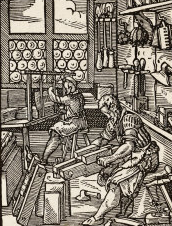Retrieving and Rerouting Referential Codes Through Photographic Images in Sophie Calle's Work
Abstract
In most of her works, the French artist Sophie Calle stages herself and throws herself in as her own character in order to explore the boundaries of privacy, (in)decency, banality and outrage. It comes as no surprise that she often relies on the codes of biography and autobiography while shaping her works, in order to willingly blur the limits between reality and representation. Autobiography, which is both highly referential and, according to Philippe Lejeune (1975), mostly based on the adequacy between the character, the narrator and the existing self of the writer, requires a certain readers’ perspective in which the impression of reality needs to be significant. Therefore, its comprehension is partly influenced by paratextual works and critical discourse, as they both affect the reading process, and entrench it in a referential perspective. Consequentially, it seems relevant to focus on analyzing Calle’s aesthetic strategies within this paratext: by paying attention to the different covers of Calle’s Des Histoires vraies (1994) – six in total – in parallel to the referential mechanism presented in Paul Auster's Gotham Handbook, we wish to demonstrate how Calle’s works play around the concept of referentiality in order to either reinforce or mislead readers’ expectations created by the perspective of autobiography. This analysis will first center on the inferences supporting the iconic characteristics of Calle’s photographs, and then on the text-image layout and their resulting contradictions.
Published
Issue
Section
License
- Work submitted for publication must be original, previously unpublished, and not under consideration for publication elsewhere. If previously published figures, tables, or parts of text are to be included, the copyright-holder's permission must have been obtained prior to submission.
- Authors of accepted manuscripts will assign to L'Atelier the right to electronically distribute their article, or publish it in any form (Internet, CD ROM, printed copy) but authors will retain copyright and, after the article has appeared in L'Atelier, authors may republish their text (in print and/or electronic form) as long as they clearly acknowledge L'Atelier as the original publisher.


